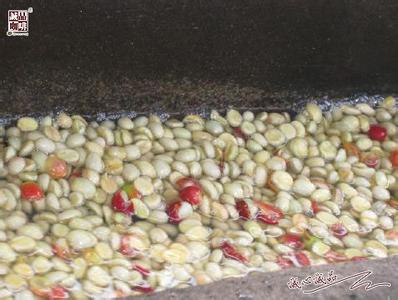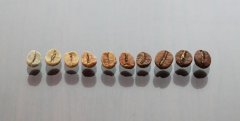What is the shelling of coffee beans?
Coffee beans are ground before they are exported, removing the endocarp from the beans before they are sold. Removing, washing the endocarp, and drying the shell of the coffee bean after the process is also known as shelling or peeling.
It is more difficult to remove the endocarp of coffee beans during wet processing than during drying, so different huskers need to be used. There are two main models: friction shell machine and compact shell machine. Engelberg and African models of friction huskers work with coffee beans, dry or wet: in a cylindrical box, the beans are squeezed between a linear convex and a knife, and the shell is scraped by the knife to expose the beans.
"Parchment coffee beans" are usually shelled on a Smout friction huller. Jules Smout is Belgian, descended from Scots. He was born in Kneisberg, Prussia, and settled in Guatemala. In 1844, he developed a coffee peeling machine equipped with a rotating body with a screw, which rotates in a box with a screw, and the screw rotates in the opposite direction. As the coffee beans are propelled along the rotor, the endocarp is stripped from the beans. Because the rotor rotates relatively slowly, the rotor generates less heat than other types of huskers.
Other shellers include the roll-type (mainly for dried coffee beans grown in South America) and cross-bar (equipped with knives) shellers.
Outside Brazil, parchment coffee beans are processed in a press sheller rather than a friction sheller. Coffee beans must have a moderate moisture content when shelled, otherwise they may crack. The press sheller consists of a horizontal disk rotating in an annular body, around which the edges are iron needles or irons. When the machine is running, the coffee beans come into contact with the iron needles due to centrifugal force, which causes the endocarp shell to fall off.

Important Notice :
前街咖啡 FrontStreet Coffee has moved to new addredd:
FrontStreet Coffee Address: 315,Donghua East Road,GuangZhou
Tel:020 38364473
- Prev

Wet treatment to make coffee drink clean and rich
Boutique coffee beans must be excellent varieties, such as the original bourbon species, mocha species and Tippica species. The coffee beans produced by these trees have unique aroma and flavor, which is far from that of other tree species, but the relative yield is low. in recent years, in order to pursue the ability of disease and insect resistance and increase the yield, there have been many improved tree species, such as the massive promotion of high-yield rurial11 species in Kenya.
- Next

Coffee roasting
The growth environment of boutique coffee beans also has higher requirements. Generally grow at an altitude of 1500 meters or even more than 2000 meters above sea level, with appropriate precipitation, sunshine, temperature and soil conditions. Some world-famous coffee beans also have a special geographical environment, such as the alpine clouds in the Blue Mountains, the free shade provided by the afternoon clouds in Kona, and the volcanic ash soil in Antigua.
Related
- Guji coffee producing area of Guji, Ethiopia: Humbela, Shakiso, Wulaga
- What is the most expensive variety of Qiloso in BOP multi-variety group?
- How to store the coffee beans bought home?
- Why are Yemeni coffee beans so rare now?
- Ethiopian Sidamo all Red Fruit Sun Sun Santa Vini Coffee beans
- SOE is mostly sour? What does it mean? Is it a single bean? what's the difference between it and Italian blending?
- Is Italian coffee beans suitable for making hand-brewed coffee?
- How to choose coffee beans when making cold coffee? What kind of coffee beans are suitable for making cold coffee?
- Just entered the pit to make coffee, what kind of coffee beans should be chosen?
- Can only Japan buy real Blue Mountain Coffee? What are authentic Jamaican Blue Mountain coffee beans?

